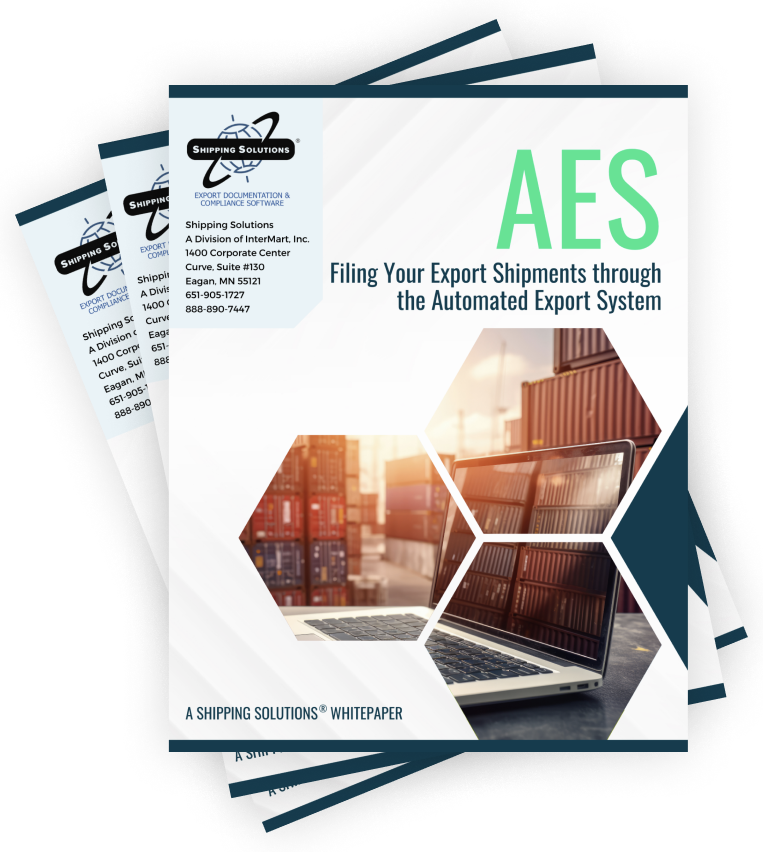The International Trade Blog Export Compliance
How to Determine the USPPI
On: February 26, 2020 | By:  David Noah |
4 min. read
David Noah |
4 min. read
 In the exporting industry, we tend to talk about our roles in general terms: I’m the exporter, you’re the importer, he’s the freight forwarder, etc. However, these terms aren’t always precise enough.
In the exporting industry, we tend to talk about our roles in general terms: I’m the exporter, you’re the importer, he’s the freight forwarder, etc. However, these terms aren’t always precise enough.
In some circumstances, it's more accurate to say "I am the U.S. Principal Party in Interest (USPPI)" instead of "I am the exporter." It's important to understand the difference in meaning between these two terms.
A History of U.S. Principal Party In Interest
Why do we need to differentiate between terms like exporter and USPPI to begin with? The simplified answer is that in fall 2000, the U. S. Census Bureau updated the look of the Shipper's Export Declaration (SED) and the corresponding Foreign Trade Regulations. The new rules, while badly needed, changed Block 1a from "Exporter" to "U. S. Principal Party in Interest."
The old paper SED is long gone, replaced by the Automated Export System (AES). Today most U.S. exporters need to file their electronic export information (EEI) through AES on the Automated Commercial Environment. But I digress.
There are several reasons that the regulations changed. Here are three:
1. To clarify and specify the documentation and documentation-sharing responsibilities of all parties in an export transaction.
In a standard export transaction—the type of transaction that most of us think of when we think of an export—the seller of the goods arranges transportation of the goods to the buyer located in another country.
That compares to what the U.S. Foreign Trade Regulations calls a routed export transaction, which is when the foreign buyer agrees to take possession of the goods somewhere in the United States and arranges the transportation of the goods to the final destination. In this case, unless the foreign buyer is currently located in the United States, they must hire a freight forwarder or another agent to coordinate that process.
This type of export is much more common than one might expect and comes into play based on the trade terms the buyer and seller agree upon. In an international transaction, that's typically one of the Incoterms 2020 rules that outline which party is responsible for the various parts of the journey.
It's that second scenario that sometimes causes confusion about who's the exporter, who's responsible for export compliance, and who must submit the EEI through AES. The FTR defines a USPPI as someone who could be different than the exporter but who still has certain legal responsibilities during the export transaction.
2. To identify the data the USPPI is responsible for reporting.
Even in a routed transaction, the USPPI must provide several pieces of data that the buyer's agent may require to file through AES: the USPPI's name, Employer's Identification Number (EIN), and basic commodity information.
3. To create conformity in document issuance.
For purposes of submitting the EEI through AES, the exporter is always designated as the USPPI, and the Foreign Trade Regulations clearly specifies who that party must be. Also, the Export Administration Regulations (EAR) define the parties who may be listed as the applicant on the BIS license. The only difference is that the EAR, in certain routed export transactions, will allow the agent of the foreign principal party in interest to be listed as the exporter on the license.
So, Who Is the USPPI?
The best website to find answers to questions regarding the USPPI and learn about regulations is the U.S. Census Bureau website. The Census Bureau defines the USPPI as follows: "The person in the United States that receives the primary benefits, monetary or otherwise, of the export transaction; generally that person is the U.S. seller, manufacturer, order party, or foreign entity. The foreign entity must be listed as the USPPI if it is in the United States when the items are purchased or obtained for export."
The National Customs Brokers & Forwarders Association of America (NCBFAA) says it this way: “If you are the recipient of the purchase order from the overseas party for cargo that is exported and you are invoicing them for the product, you are the USPPI no matter what the terms of sale are.”
In addition to defining who the USPPI is, the Census Bureau also defines who cannot and who can plausibly be the USPPI.
Who Cannot Be the USPPI?
The forwarding agent or the consolidator cannot be listed as the USPPI on the AES record with one very specific exception. A freight forwarder who acted as a customs broker and arranged import clearance of goods can be listed as the USPPI if the goods are subsequently exported without change or enhancement.
Who Can Be the USPPI?
Generally that person can be the:
- U.S. Seller (wholesaler/distributor) of the merchandise for export.
- U.S. Manufacturer if selling the merchandise for export.
- U.S. Order Party—the party who directly negotiated between the U.S. seller and foreign buyer and received the order for the export of the merchandise.
Why Is This Confusing?
In some situations, determining the USPPI isn’t always a simple task because it’s not immediately obvious what party is in charge or has control. We discuss real-life case studies (with the names changed) of which firm is legally the USPPI in our series, Understanding the U.S. Principal Party of Interest.
This article was first published in October 2015 and has been updated to include current information, links and formatting.

About the Author: David Noah
David Noah is the founder and president of Shipping Solutions, a software company that develops and sells export documentation and compliance software targeted at U.S. companies that export. David is a frequent speaker on export documentation and compliance issues and has published several articles on the topic.



